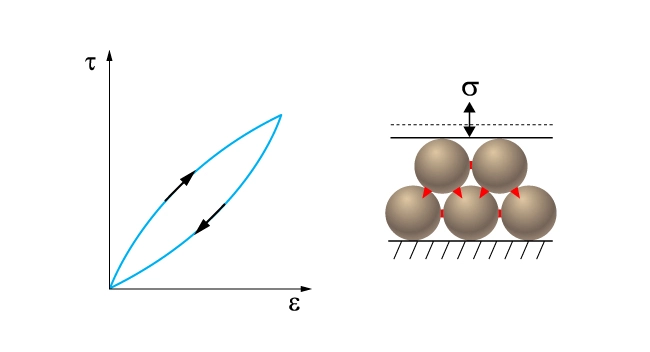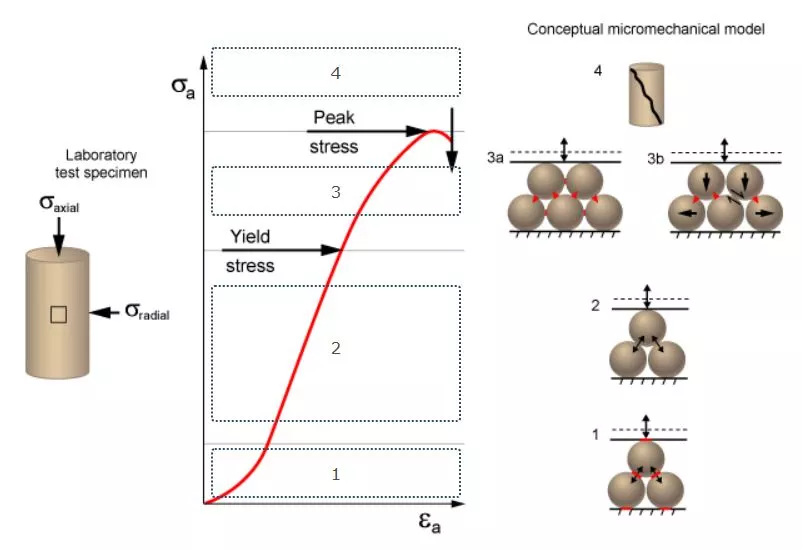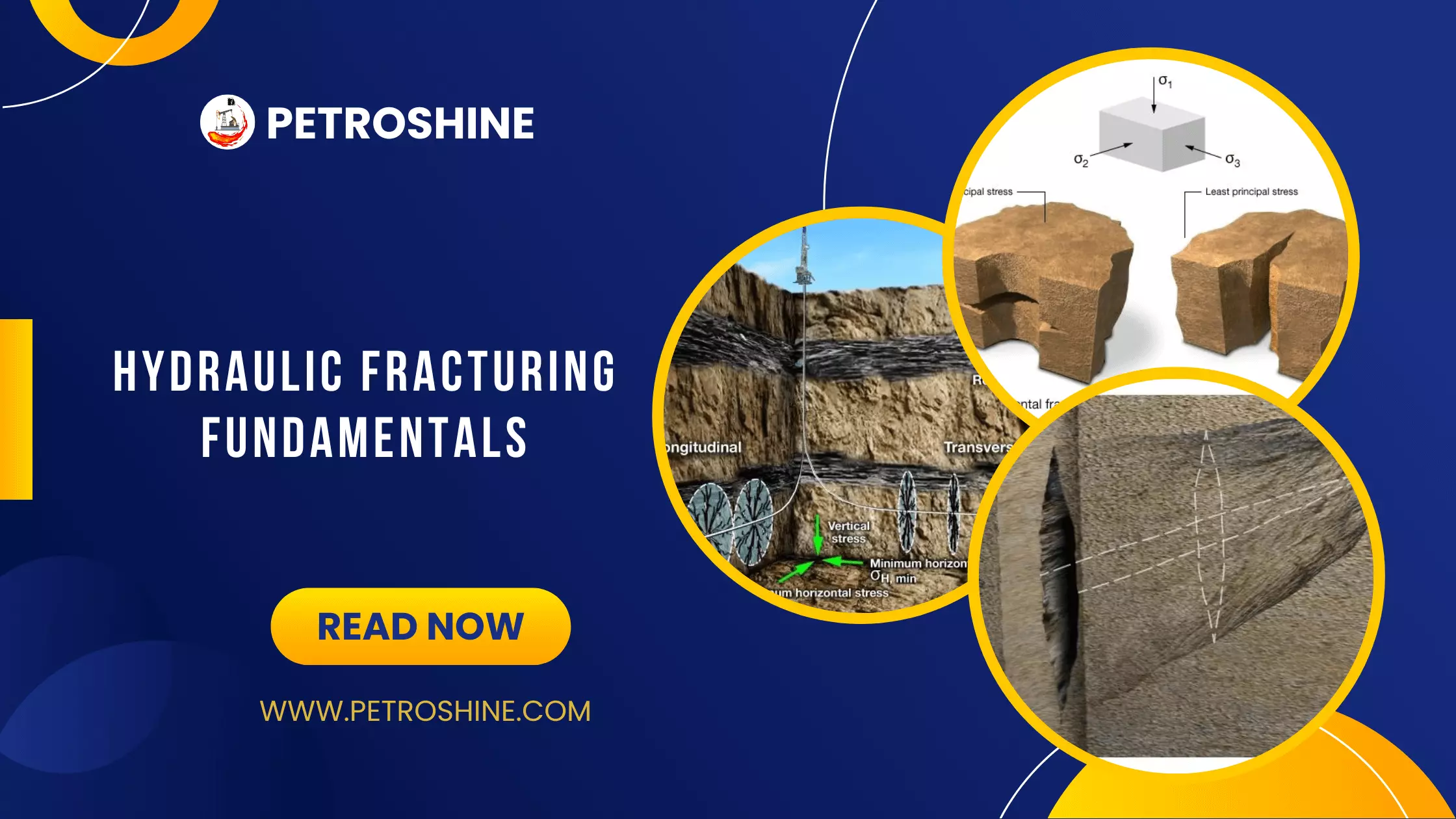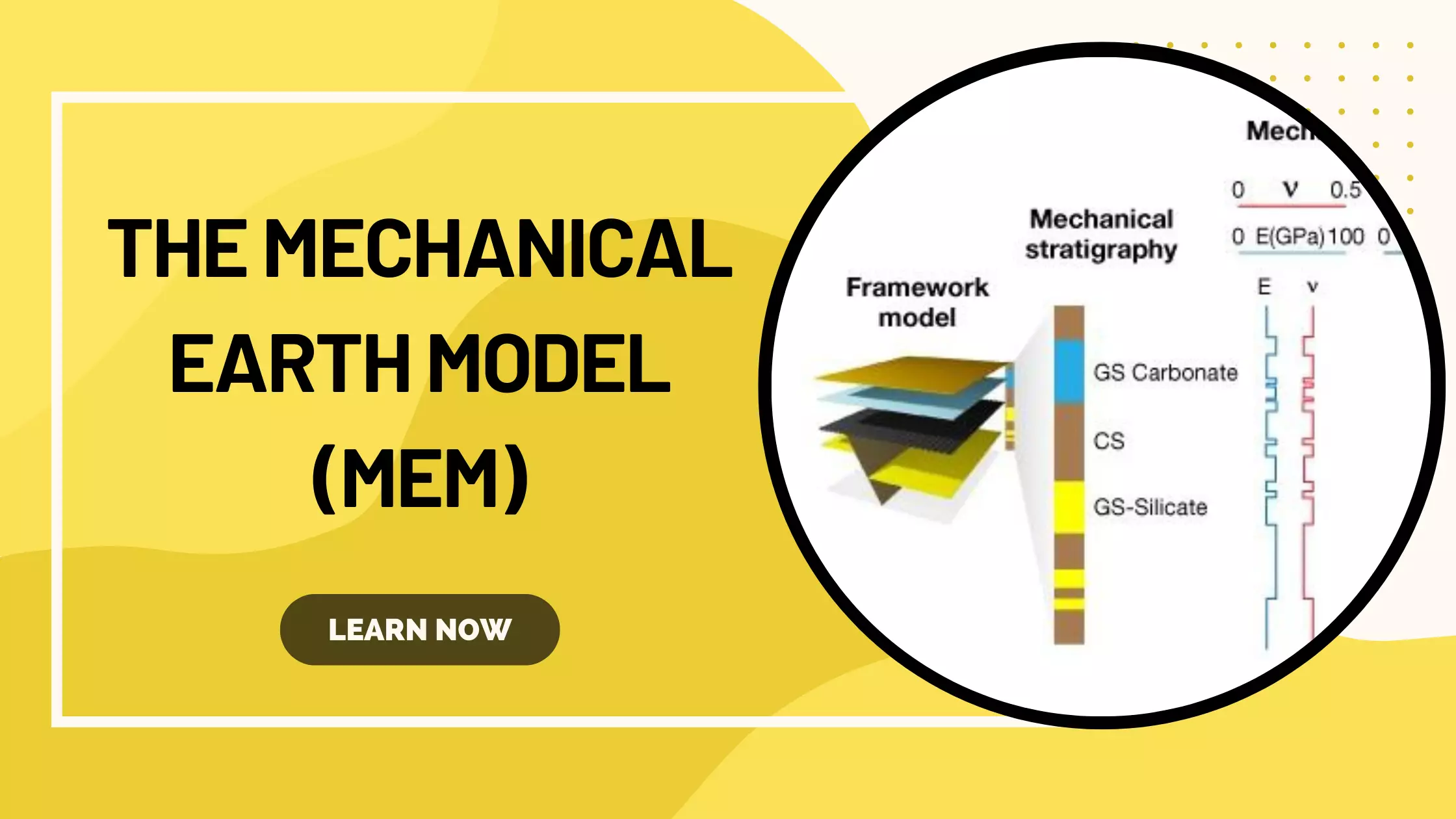Elastic-Plastic Processes
Elastic responses to deformation refer to a material that can return to its original (or near original) state after it has been subjected to stress and that stress has been subsequently taken away. Plastic responses to deformation refer to a permanent change in the rock after the stress has been removed. There are three stress-strain responses, which are characteristic of sedimentary rocks prior to macroscopic failure.
Three Stress-Strain Responses
Linear Elastic Response
Figure 1 illustrates a linear elastic response. In this case a material that is subjected to stress will deform, however, when the stress is removed, that material will return to its original form, with no extraneous deformation.

Viscoelastic Response
Figure 2 illustrates a viscoelastic response. A rock subjected to a load beyond its yield strength causes permanent deformation at grain boundaries resulting in non-recoverable plastic strain. Elastic deformations are completely reversible along the same loading and unloading curve. Grains and grain contacts deform in a linear elastic manner and there is no permanent strain. A viscoelastic response is characterized by hysteresis but the deformation is reversible with no permanent deformation. Hysteresis indicates energy is probably expended by small rotations of grains and by the opening and closing of microcracks (red features).

Viscoelastic-Plastic Response
Figure 3 illustrates a viscoelastic-plastic response, non-linear elastic deformation of microcracks at grain contacts and at grain boundaries. There is no plastic strain. A viscoelastic-plastic response is characterized by both hysteresis and the development of permanent strain. Plastic, or permanent non-recoverable, strain arises when rocks exceed their yield stress. Plastic strain results from permanent displacement at grain contacts and/or along micro cracks.

The Stress-Strain Response of Rock
Figure 4 shows a schematic of an axial stress-strain curve measured on a typical sedimentary rock sample with porosity less than about 25%. It shows how multiple deformation mechanisms can be mobilized in a single rock sample depending on the magnitude of the applied stress.
The curve is characterized by four distinct segments. Click the numbers to learn more.
Axial Stress-Strain Curve

Segment 1 is a non-linear response as external loading is applied. The increasing slope of the curve indicates that the elastic modulus is increasing with increasing applied load. This “stiffening” of the rock is due to the closure of compliant parts of the microstructure like high-aspect ratio pores, compliant grain contacts and microcracks that are subjected to high normal stress.
Segment 2 is characterized by a linear-elastic response where the slope of the stress-strain curve is constant over a range of increasing stress.
Segment 3 is characterized by a decrease in the slope of the curve signifying a decrease in the elastic stiffness. Depending on the material, this “softening” behavior can be attributed to microfracturing, frictional sliding at particle contacts, or both. The stress corresponding to the transition from linear to non-linear behavior is called the yield stress.
Segment 4 corresponds to the development of a macroscopic through-going shear fracture(s) signifying that applied stress exceeds the rock’s compressive strength.
 Petro Shine The Place for Oil and Gas Professionals.
Petro Shine The Place for Oil and Gas Professionals.



